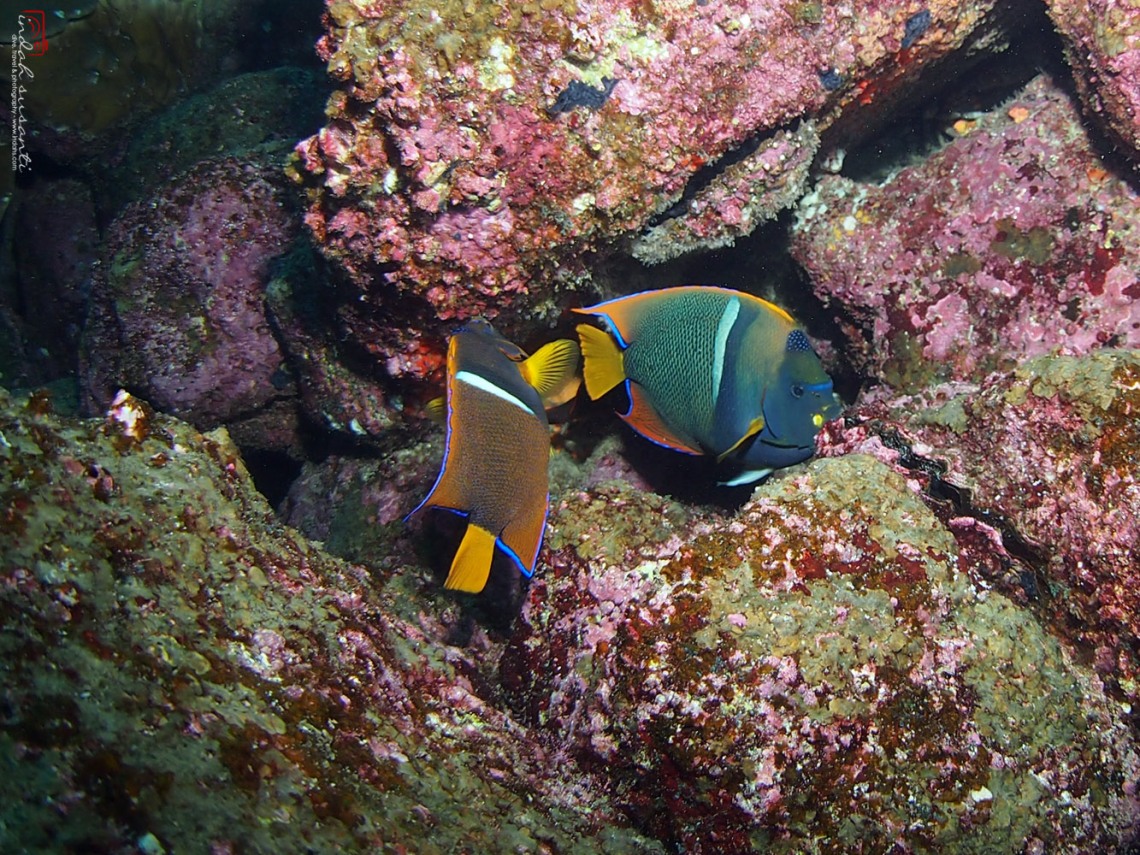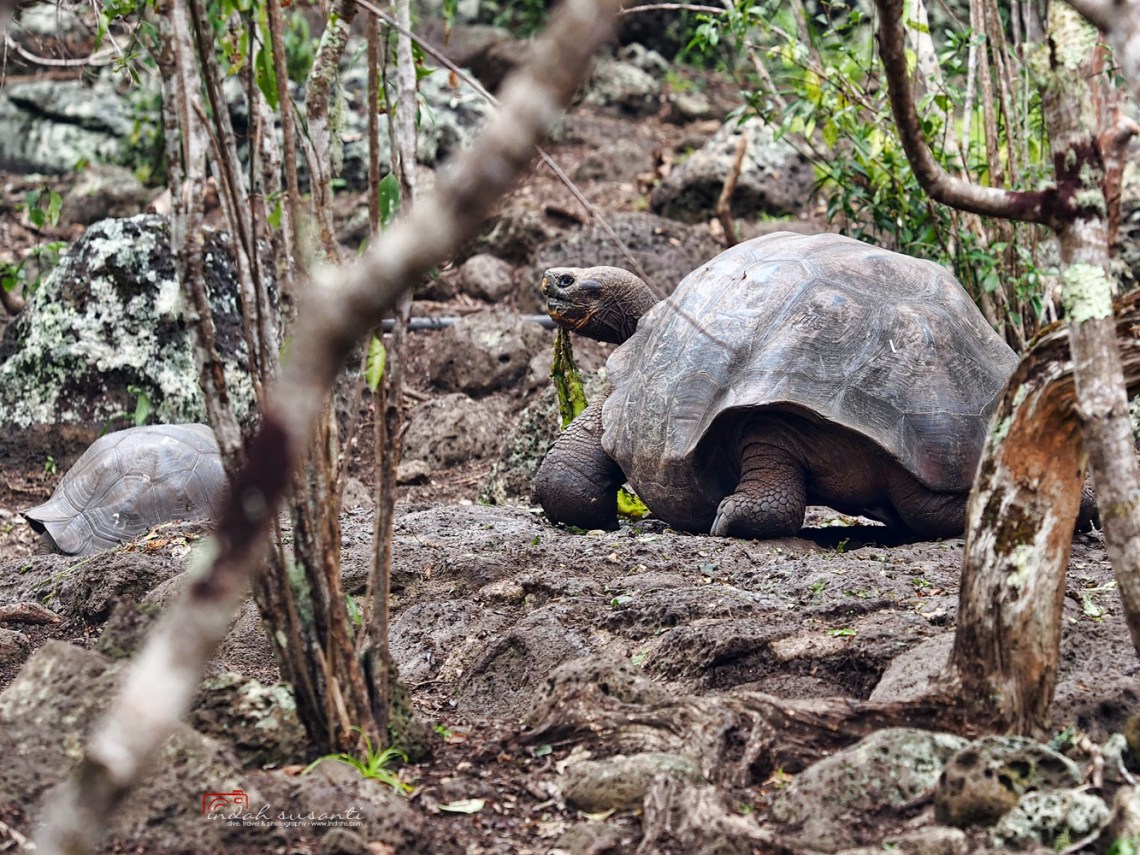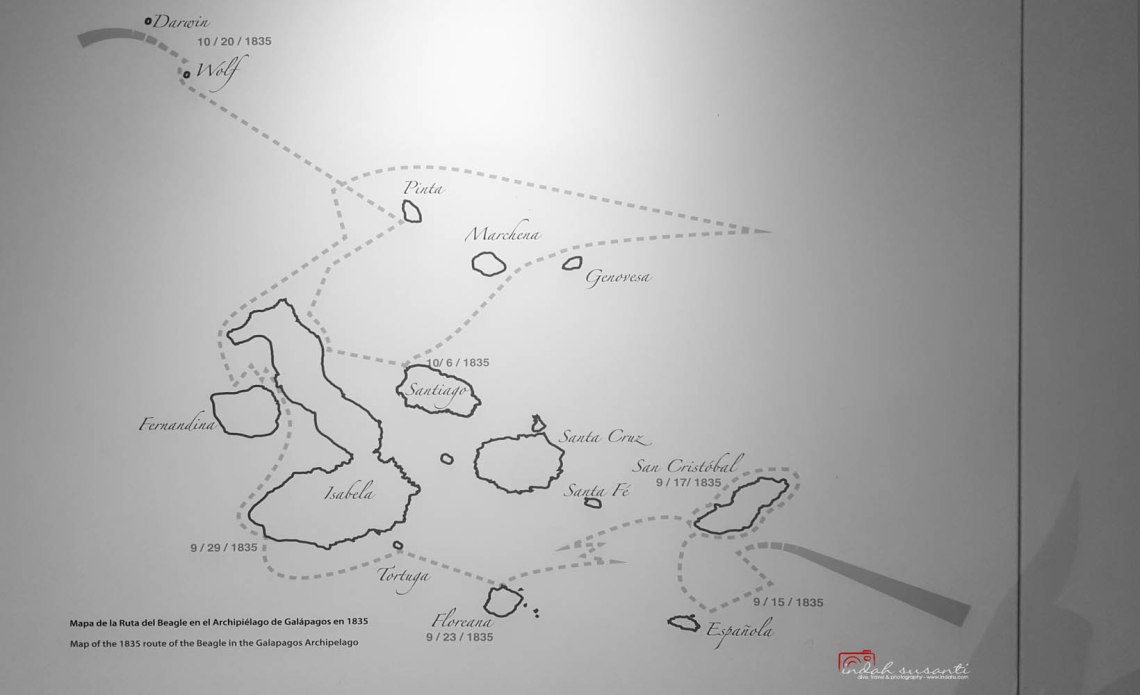Five Things About Galápagos

The reason we visited Galapagos is actually someone (read: Dutchie) has been dreaming to scuba dive with the schooling of Hammerhead sharks. Three famous locations in the world to scuba dive with the schooling of Hammerhead sharks are Cocos Island (Costa Rica); Galapagos (Ecuador) and Malpelo Island (Colombia). We chose Galapagos because someone (read: Indah) has been dreaming to see the vampire finch birds, marine iguana, and the Galapagos sea lions. Seemed like a win-win solution. Following are the five things about Galapagos that I would like to share with you…
There are four inhabitant islands in Galapagos
The four inhabitant islands in Galapagos are San Cristobal; Santa Cruz; Isabela and Floreana. Meanwhile, the rest of the islands are uninhabited. Each island has its special unique animals, for instance; Isabela is known for its tiny penguins; Seymour North for its frigate birds and blue-footed boobies; Darwin and Wolf Islands for scuba diving with hammerhead sharks and migration path of whale sharks, whales, eagle rays, turtles and much more migrated marine species.
Interestingly, the vampire finch birds, the giant tortoise, marine iguana, and sea lions are widespread in Galapagos islands and its coastline.

Galapagos has two seasons
The dry and cool season usually called as Garua is from July to December. You can expect perpetual mists around the islands and the weather is colder. The Spaniards called the misty Galapagos islands as ‘Las islas encantadas’ (the enchanted islands). The second season is from January to June, as wet and hot season. You can expect rains during these months. Basically, you can visit Galapagos all year round as the animals are always visible to humans.

Charles Darwin spent five weeks in Galapagos and…
…the giant tortoise meat was his favorite meal. It was reported that he ate the supposed science specimen, the giant tortoise in his ship, during his return sailing to Europe. Charles Darwin loved the tortoise meat too much that he even ate the specimen for his research. Talking about science and the scientist’s appetite…
Goat was the first invasive species
The first invasive species in Galapagos was the goat. The goat was introduced by David Porter, an American commander who was based in Galapagos to fight the British whaling fleet. The giant tortoise had to compete with the goat on food since the goats ate almost all vegetation in the Galapagos Islands. The tortoise starved to death and its number was decreasing until the Project Isabella had taken over to remove all goats from the islands.

Giant tortoise
Galapagos sea lions were popular in Asia…
…as Viagra. The male sea lions were hunted for their genitals for Asian black market. As an Asian, I had not known this until I read a book about Galapagos and its conservation efforts. Its population was decreasing until they become protected animals and symbol/ icon of Galapagos by the authority. Gosh, these sea lions are so adorable. They do bark when you get too close to them. And their sleeping habits reminds me of my dog – I think they just sleep all day long in any kind of weird positions.


Additional Information…
* When you visited Galapagos from outside of Ecuador, you have to pay a Galapagos Transit Control Document at the airport where you depart to Galapagos (the cost as in December 2017 is $20 per person). Your suitcases and carry-on bags will be checked and locked to ensure that you don’t bring invasive living things (that includes fruits) to the islands. Then upon arrival in Galapagos, you have to pay a fee of the Galapagos National Park (the cost as in December 2017 is $100 per person).
* Drones are not permitted in Galapagos Islands (source) and according to a traveler whom we met during our trip, the tour operators in Galapagos will not allow their guests to operate the drones either.
* Ecuador’s currency is US Dollar. However, pay attention to the coins as some of their coins are actually local.
* Island hopping in Galapagos is an option to save money when visiting Galapagos. There is transportation between the inhabitant islands such as ferry, speedboat, or even chartered planes. From those islands, you can arrange a day tour to the uninhabited islands at the local tourist shops. However, not all uninhabited islands are allowed for tourists. Wolf and Darwin islands are ones of the uninhabited islands in Galapagos that prohibited for tourists to visit. Additionally, only limited boats allowed to be around the islands.
* More informative posts about Galapagos by bloggers, please visit: Andy’s World Journey and Latitude Adjustment
Disclosure: some information in this post also collected from an impressive book written by Carol Ann Bassett: Galapagos at the Crossroads: Pirates, Biologists, Tourists, and Creationists Battle for Darwin’s Cradle of Evolution

As always…very informative post and great (did I say GREAT) pictures!! Thanks for sharing!
Thank you so much, Kirt 🙂
I really hope i get to visit here some day!
My best for you!! I am sure you will enjoy Galapagos once you are there 🙂
Reblogged this on SHIFT2Drive.blog.
A very interesting and useful post. Great photographs, too!
Thank you. All my best to you and Happy Valentines Day.
amazing photos